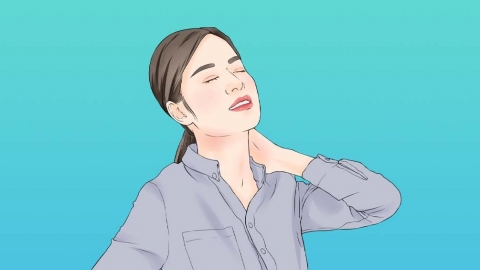What causes high resistance in the vertebral artery?
High resistance in the vertebral artery may be caused by aging, long-term poor posture, cervical spondylosis, hypertension, hyperlipidemia, and other factors. Management can be tailored according to specific conditions. If physical discomfort occurs, it is recommended to visit a hospital promptly and follow medical advice for appropriate treatment.

1. Aging: With increasing age, arterial walls gradually develop atherosclerotic changes and lose elasticity, leading to elevated resistance in the vertebral artery. It is advisable to engage in regular physical exercise, such as walking or jogging (aerobic activities), maintain a balanced diet rich in vegetables and fruits, reduce intake of high-fat and high-cholesterol foods, quit smoking, limit alcohol consumption, and undergo regular medical checkups.
2. Long-term poor posture: Prolonged desk work or looking down at mobile devices can alter the natural curvature of the cervical spine, compressing the vertebral artery and increasing its resistance. Correcting poor posture, performing regular neck movements, receiving neck massages and stretching exercises, choosing suitable pillows and chairs, and avoiding maintaining the same neck posture for extended periods are recommended.
3. Cervical Spondylosis: Degeneration of the cervical spine or herniated discs can narrow the intervertebral space, compressing the vertebral artery and causing insufficient cerebral blood supply, which may lead to symptoms such as dizziness, headache, and blurred vision. Patients can take medications like Jingfukang granules, mecobalamin tablets, and flunarizine hydrochloride capsules under a physician's guidance to alleviate symptoms.
4. Hypertension: Prolonged high blood pressure increases stress on the vascular walls, potentially causing vertebral artery spasm, narrowing, and increased resistance. Symptoms may include headache, palpitations, and tinnitus. It is recommended to follow medical instructions for using antihypertensive medications such as nifedipine sustained-release tablets, enalapril tablets, and irbesartan tablets to control blood pressure and reduce vertebral artery resistance.
5. Hyperlipidemia: Excess lipids in the blood can deposit on vascular walls, forming atherosclerotic plaques that narrow the vertebral artery lumen and increase resistance. This condition may not present obvious symptoms initially, but severe cases can cause dizziness and fatigue. Patients may take medications such as atorvastatin calcium tablets, fenofibrate capsules, and probucol tablets under medical guidance to aid recovery.
In daily life, maintaining emotional stability, avoiding excessive tension and anxiety, increasing physical activity, maintaining a balanced diet, and managing body weight can help reduce vertebral artery resistance.
References:
[1] Ma Jinmei. Observation on the Effect of Hemodynamic Parameters in Neck Vascular Ultrasound on Intracranial Segment Stenosis of the Vertebral Artery[J]. Imaging Research and Medical Applications, 2022, 6(16): 74-76.
[2] Tian Yingjun. Effects of Massage Therapy on Patients with Vertebral Artery Type Cervical Spondylosis[J]. Frontier of Medicine, 2024, 14(30): 114-116+120.




